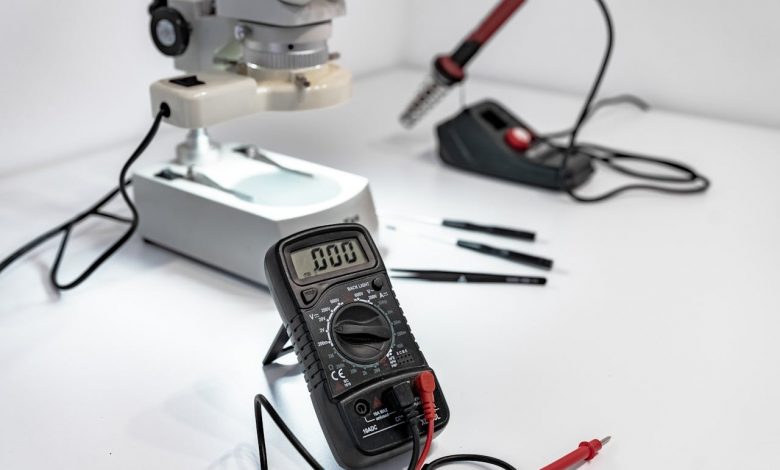The Importance of PAT Testing for UK Care Homes

In the UK care sector, ensuring the safety and well-being of residents is a top priority. From medical equipment to electrical devices used daily, care homes rely on various tools to maintain a high standard of care. However, these essential devices also pose potential risks if not properly maintained. Portable Appliance Testing (PAT) plays a critical role in mitigating these risks, safeguarding not only the residents but also staff and visitors. For care homes, PAT testing is more than a regulatory obligation; it is an essential step towards creating a secure, compliant, and efficient environment.
What is PAT Testing?
Portable Appliance Testing (PAT) refers to the inspection and testing of electrical equipment to ensure it is safe for use. This process involves both visual checks and electrical testing to identify any defects or issues that could lead to electrical faults, fires, or injuries. PAT testing applies to all portable appliances, from kettles and toasters to medical equipment and computers. The Health and Safety at Work Act 1974 and the Electricity at Work Regulations 1989 require employers, including care home operators, to ensure that all electrical systems and appliances are maintained in a safe condition.
For care homes, where residents are often vulnerable and reliant on electrical devices for their daily needs, PAT testing takes on heightened significance. Malfunctioning equipment can compromise safety, disrupt care services, and increase the likelihood of accidents.
Why is PAT Testing Critical for Care Homes?
1. Resident and Staff Safety
The primary reason for conducting regular PAT testing is to protect residents, staff, and visitors from electrical hazards. Faulty electrical appliances are a common cause of accidents, such as electric shocks or fires. Care homes often use appliances like medical devices, hoists, heating units, and mobility aids. A failure in any of these devices could lead to severe consequences, particularly for elderly or disabled residents who may already be in fragile health.
PAT testing helps identify potential faults before they escalate into dangerous incidents, ensuring peace of mind for everyone involved.

2. Compliance with UK Health and Safety Laws
Care homes must adhere to strict health and safety regulations. Under the Electricity at Work Regulations 1989, employers have a legal obligation to ensure all electrical systems are safe to use. While PAT testing itself is not explicitly mandated, it is widely recognised as the most effective method for fulfilling this duty. Failure to comply with these regulations can result in penalties, fines, or even legal action.
By scheduling regular PAT testing, care home managers can demonstrate compliance with UK laws and avoid any legal repercussions.
3. Prevention of Disruption
Electrical faults can cause unexpected breakdowns, leading to disruptions in essential care services. For example, a malfunctioning hoist or medical monitoring device can delay critical care, impacting the quality of service provided to residents. Regular PAT testing ensures appliances remain in good working condition, reducing the likelihood of sudden failures and downtime.
Proactive testing not only prevents inconvenience but also saves money by identifying issues early, reducing the need for expensive repairs or replacements.
4. Fire Safety
Electrical appliances are one of the leading causes of fires in care homes. According to the UK Fire and Rescue Services, electrical faults are a major contributor to domestic and commercial fires. In a care home environment, where evacuation can be particularly challenging, fire prevention is crucial.
PAT testing helps identify faulty wiring, damaged plugs, or other issues that could result in electrical fires. By ensuring appliances are safe, care homes can significantly reduce the risk of fire incidents and protect lives.
How Often Should Care Homes Conduct PAT Testing?
The frequency of PAT testing depends on the type of equipment and its usage. In care homes, where appliances are often used daily, more frequent testing may be necessary. High-risk items, such as medical equipment and portable heaters, should be tested regularly. A thorough risk assessment will help determine the appropriate schedule for testing.
It is also important to keep records of all PAT testing activities. Documenting test results demonstrates compliance with regulations and provides evidence in the event of inspections or audits.

Partnering with PAT Testing Experts
Ensuring the safety of residents and staff requires professional expertise. Partnering with a qualified PAT testing service provider, like Global Compliance, guarantees thorough inspections and accurate testing results. Global Compliance offers tailored PAT testing solutions for care homes, helping you maintain a safe, compliant, and efficient environment.
Our team of experts understands the unique challenges faced by care homes and ensures that all appliances are rigorously tested to the highest standards. To learn more about our PAT testing services, visit Global Compliance.
Final Thoughts
For UK care homes, PAT testing is not just a regulatory requirement but a critical component of safety and risk management. By conducting regular testing, care homes can protect their residents, staff, and visitors while ensuring compliance with legal standards. The peace of mind that comes from knowing all electrical appliances are safe and functional is invaluable.
To ensure your care home meets safety requirements and avoids unnecessary risks, make PAT testing a priority. For professional and reliable PAT testing services, contact Global Compliance today.
For expert PAT testing solutions tailored to your care home’s needs, visit Global Compliance.




